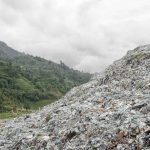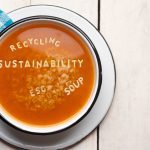Bioplastics: Solution or New Problem?
When it comes to bioplastics, there are two main forms on the market today: polylactic acids (PLA) and polyhydroxyalkanoates (PHA). PLA plastics are made from plants like corn and sugarcane by extracting the sugars and refining them. PHA plastics are made from the digestion process of microbes. PLA plastics are most commonly used for food packaging, while PHA plastics are most commonly used for medical devices. Now there are a variety of other bioplastics out there, but these are the most commonly available and utilized bioplastics.
There are a lot of people that will claim that Bioplastics answer a lot of the issues with PET plastics. They are made from a renewable resource, and they are biodegradable. Sounds like an improvement, right? Not so fast…
PLA (polylactic acid) is typically made from the sugars in corn starch, cassava or sugarcane. It is biodegradable, carbon-neutral and edible.
To turn corn into plastic, corn kernels are soaked in sulfur dioxide and hot water. This process breaks the corn down into starch, protein, and fiber. The kernels are then ground up and the corn oil is separated from the starch. Starch is made up of long chains of carbon molecules, similar to the carbon chains in plastic from fossil fuels. Citric acids are mixed in to form a long-chain polymer (a large molecule consisting of repeating smaller units) that is the building block for all plastics. PLA can look and behave like polyethylene (used in plastic films, packing, and bottles), polystyrene (Styrofoam and plastic cutlery) or polypropylene (packaging, auto parts, textiles).
PHA (polyhydroxyalkanoate) is made by microorganisms (sometimes genetically engineered) that produce plastic from organic materials. The microbes are deprived of nutrients like nitrogen, oxygen, and phosphorus, but given high levels of carbon. They produce PHA as carbon reserves, which they store in granules until they have more of the other nutrients they need to grow and reproduce. Companies can then harvest the microbe-made PHA, which has a chemical structure similar to that of traditional plastics. Because it is biodegradable and will not harm living tissue, PHA is often used for medical applications such as sutures, slings, bone plates, and skin substitutes. In a commercial market, it is also used for single-use food packaging.
Production
Keep in mind that bioplastics are made with a renewable resource. One that has to be grown, harvested, and processed. That’s not even taking into account the amount of land that would be needed to grow the crops. That’s land that is currently being used to grow food, and the land is a finite resource. Then, you’ve got the millions of gallons of water needed, the pollutants like fertilizers, and all the other environmental hazards of mass-production farming.
Recyclability
Bioplastics cannot be recycled the same way petrochemical-based plastics can, and that is a problem. Those same consumers that don’t want to sort the recyclable plastics aren’t going to bother to sort bioplastics either. That “environmentally-friendlier” bioplastic is going to end up in the same landfill that it’s petrochemical cousin is in.
A world with a large amount of petro and bio-based plastics require a scalable recycling process and a substantial amount of communication to properly recover the material and avoid cross-contamination.
Biodegradability
Even the most biodegradable of the bioplastics don’t quite biodegrade that well. All plastics are supposedly biodegradable, it just might take 1000 years, and even then they still turn into microplastics (tiny plastic particles) that are their own special environmental nightmare. People will tell you that bioplastics are better because they break down faster. “Faster” could mean 300 years instead of 1000.
Ability to be Composted
Some bioplastics can be composted, which is obviously a better option than waiting a few hundred years for them to break down naturally. The problem is: to compost bioplastics requires high-temperature commercial composting facilities that are extremely expensive to operate, and there are only roughly 100 of them in the entire country. That is really the only other option for bioplastic, other than landfilling it. In a landfill environment bioplastic won’t break down any faster than PET plastics, because they require light and air to biodegrade.
Bioplastics, while a great substitute for traditional plastics, come with their own recycling challenges – namely: they cannot be recycled with traditional plastics. If they are placed in a landfill environment, they are deprived of light and oxygen, which are the key components that make them biodegradable. To implement bioplastics on a large scale would require the entire recycling procedure for plastics to undergo a serious overhaul.
Bioplastics are definitely a step in the right direction, but they are far from the end-all-be-all solution. Phasing out single-use plastics of any kind is the solution to plastic pollution. If we can’t handle the plastics we produce now – producing more isn’t going to solve the problem.









